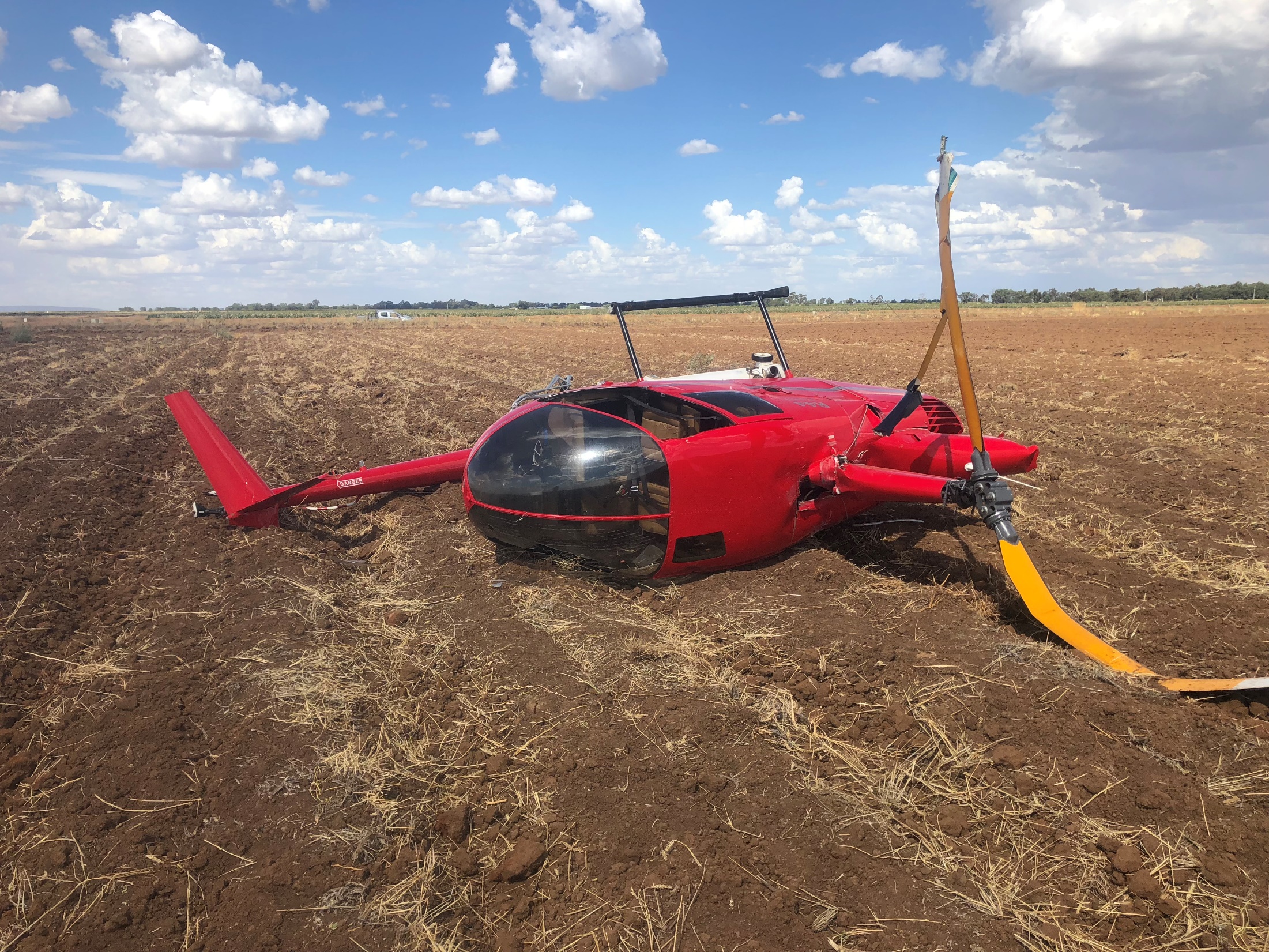| Occurrence Briefs are concise reports that detail the facts surrounding a transport safety occurrence, as received in the initial notification and any follow-up enquiries. They provide an opportunity to share safety messages in the absence of an investigation. |
What happened
On the morning of 24 March 2018, the pilot of a Robinson R44 was conducting aerial application operations on a crop near Whitton township, New South Wales (NSW). The pilot was aware of a powerline in the vicinity of the paddock and was verbally calling ‘wire at the end’ on each run towards the powerline in order to heighten his awareness of the obstacle and focus on its location.
After about ten minutes of operation over the crop at about 40 ft above ground level, the pilot commenced a run towards the powerline. As he did so, he noticed an unusual obstacle protruding about half a metre above the crop canopy and 20 m to the right of the helicopter’s track. The pilot focussed his attention on the obstacle, momentarily interrupting the verbal annunciation of the position of the powerline at the end of the spray run.
The obstacle was a water moisture probe located approximately 100 m from the end of the spray run. Although it posed no immediate danger to the operations of the helicopter, the pilot was distracted by its presence and watched it as it passed the aircraft, which was enough to interrupt his situational awareness.
As the pilot turned his focus back to the front of the aircraft at the end of the spray run and pitched the helicopter up to commence a turn, the aircraft struck the wire. After contact, the helicopter was able to proceed straight ahead for approximately 100 m with the wire dragging behind it before contacting the ground and rolling over.
The pilot exited the aircraft and sustained minor injuries in the accident. The helicopter was substantially damaged.
Figure 1: Helicopter final resting site

Source: Aircraft operator
Safety action
As a result of this occurrence, the operator has advised the ATSB that they are taking the following safety actions:
- requesting customers to detail any potential obstacles prior to operation
- conducting a site inspection prior to commencing the operation
- debriefing and discussing with pilots the use of unbroken situational awareness techniques to enhance awareness of obstacles and distractions.
Safety message
This accident highlights that distractions can arise unexpectedly during any phase of flight and demonstrates the dangers of such, especially in the low-level environment.
The ATSB research report B2004/0324, Dangerous distraction: An examination of accidents and incidents involving pilot distraction in Australia between 1997 and 2004, is available from the ATSB website.
The ATSB has also released, in association with the Aerial Agriculture Association of Australia, an educational booklet, Wirestrikes involving known wires: A manageable aerial agriculture hazard (AR-2011-028). This booklet contains numerous wirestrike accidents and the lessons learnt from them. It also highlights the role of landholders and utility owners in contributing to safe operations. This includes installing markers on wires, particularly where regular low-level flying takes place.
About this report
Decisions regarding whether to conduct an investigation, and the scope of an investigation, are based on many factors, including the level of safety benefit likely to be obtained from an investigation. For this occurrence, no investigation has been conducted and the ATSB did not verify the accuracy of the information. A brief description has been written using information supplied in the notification and any follow-up information in order to produce a short summary report, and allow for greater industry awareness of potential safety issues and possible safety actions.


